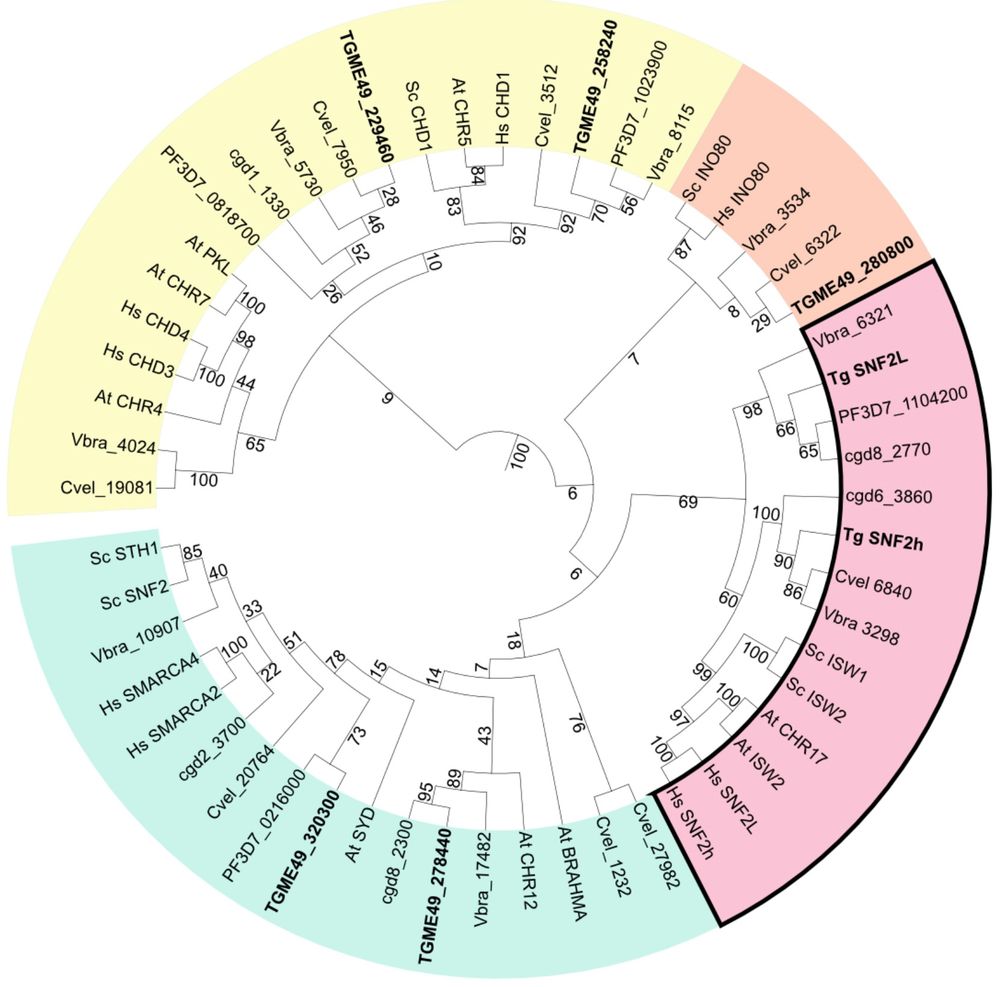- In the silence of chromatin, Toxoplasma whispers change. TgSNF2h sculpts the genome - MORC in the backseat. Some genes wake. Others sleep. A dance of nucleosomes shaping space for life parasite stages to unfold. Now in Nature Microbiology: rdcu.be/ehkWp
Apr 11, 2025 11:07
- Toxoplasma evolved two ISWI proteins: TgSNF2h and TgSNF2L. Despite looking similar structurally, these two have very different roles. TgSNF2h forms an ISWI complex with the transcription factor AP2VIII-2 and the scaffold protein TgRFTS. Spoiler: TgSNF2L will step soon into the spotlight.
- We used auxin-inducible degradation to knock down TgSNF2h and TgRFTS. The result? Massive changes in chromatin structure and gene expression. Chromatin closed. Parasite development stalled.
- And here's the twist: MORC binding drops when TgSNF2h is gone. The ISWI complex (via TgSNF2h) acts as a gatekeeper, deciding what genes stay on or off at each stage of the parasite’s life. In short: ISWI controls parasite identity.
- We think the ISWI–MORC duo might replace classical insulators like CTCF, which are missing in Apicomplexa—hinting at a novel looping mechanism. Opens new doors into chromatin architecture in early-diverging eukaryotes!
- Big thanks to Matthew Bowler and Yohann Couté for their constant support! Huge shoutout to BelenPachano – a rockstar PhD student. Cheers to Christopher Swale for co-directing this project, and to all the authors who made this great project happen!
- 🙏Massive shoutout to our funders



